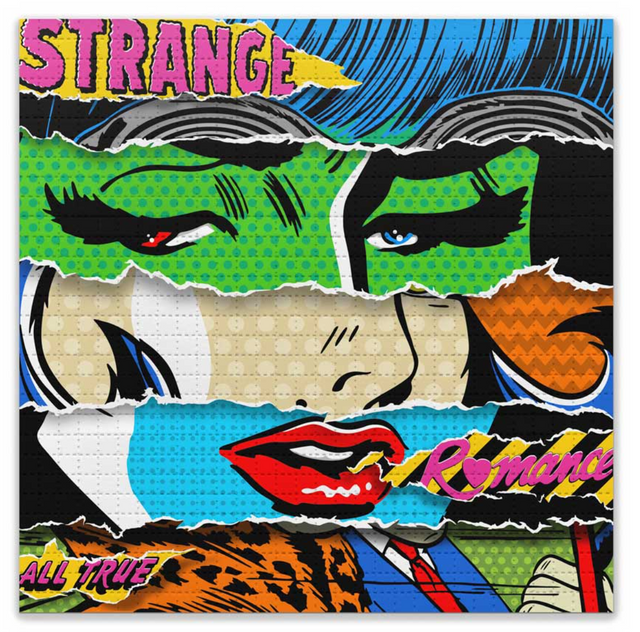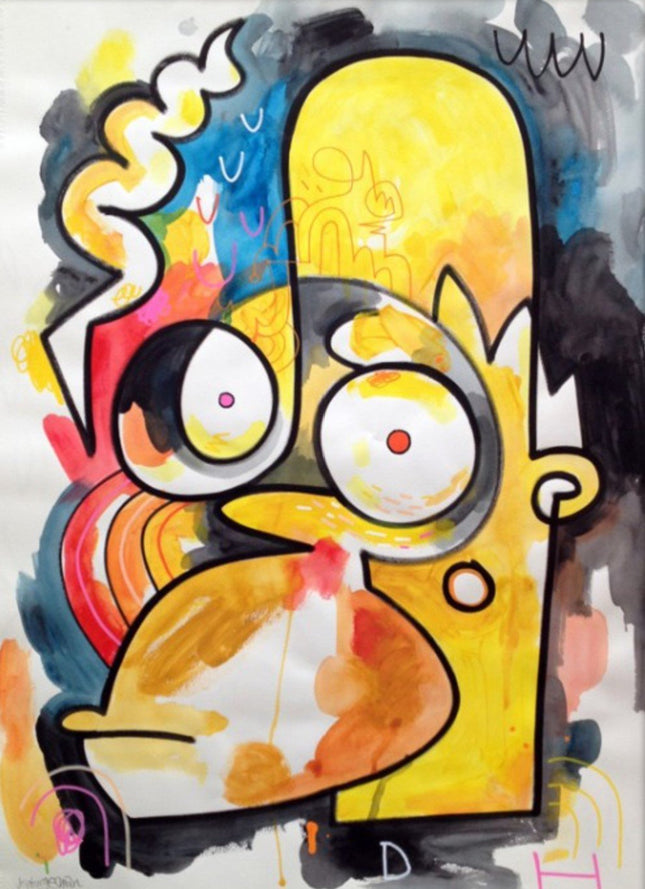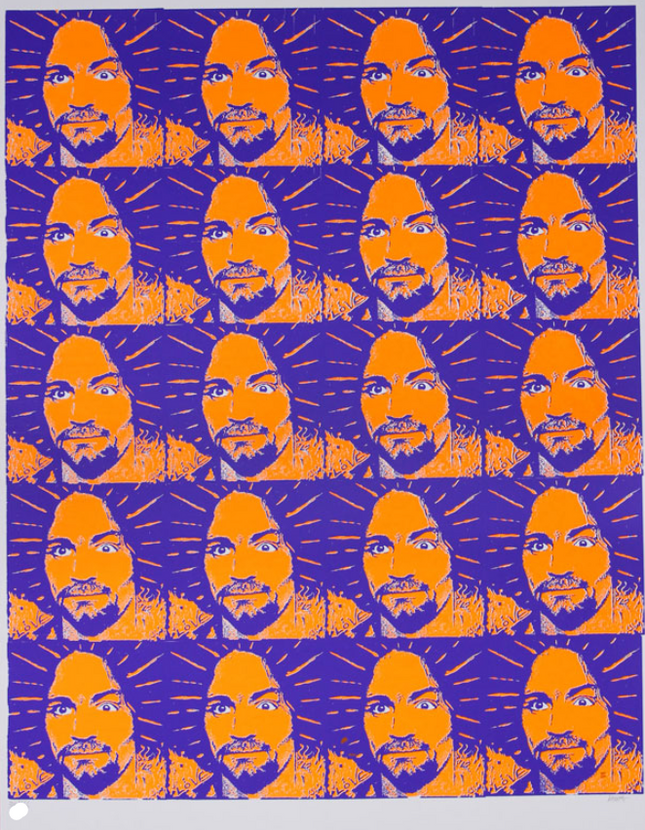
Face & Head
-

Jon Burgerman Homer Original Pasca Ink Watercolor Painting by Jon Burgerman
Homer Original Painting Pasca and Ink on Watercolor Paper by Artist Jon Burgerman Modern Pop Art. 2014 Signed Original One of a Kind Watercolor Painting Size 22.5x29.5 "Jon Burgerman makes vibrant, neo-primitive scrawls of shapes and color. He's pushed his monster-like characters into compositions where cartoon-like forms are crammed on top of each until they create a screaming mass of energy. Intensely prolific, he has pushed the character obsession of the late 90s into a far more interesting and strong direction. Think Walt Disney at an Incan monument on mescaline." - Francesca Gavin, Visual Arts Editor Dazed & Confused and author of Street Renegades and 100 New Artists published by Laurence King.
$1,917.00 $1,629.00
-

Frank Kozik Charles Manson Everythings Charlie Silkscreen Print by Frank Kozik
Charles Manson Everything Charlie Silkscreen Print by Frank Kozik Hand-Pulled 2-Color on Fine Art Paper Limited Edition Pop Street Art Artwork. 1992 Signed & Numbered Limited Edition of 666 Artwork Size 22.5x29.5 Silkscreen Print Frank Kozik's "Charles Manson Everything Charlie" is a provocative silkscreen print that embodies the raw and often controversial energy of pop and street art. Released in 1992, this artwork reflects Kozik's edgy aesthetic, a bold confrontation of cultural icons and societal motifs that challenge the viewer. The print features a repeated portrait of Charles Manson, infamously known for leading the Manson Family and orchestrating a series of gruesome murders in the late 1960s. With a limited run of 666 pieces, a number playfully nodding to the subject's notoriety, each 22.5x29.5 inch print is signed and numbered by Kozik, asserting its authenticity and rarity. Crafted through a hand-pulled process, the 2-color print starkly contrasts the vibrant orange of Manson's face against a deep blue background, surrounded by what appears to be radiating lines or aura. This choice of color and repetition creates a visual echo chamber, amplifying the unsettling impact of Manson's gaze multiplied across the paper. The artwork encapsulates the spirit of the early '90s alternative scene and the burgeoning interest in street art as social commentary. Kozik's decision to immortalize Manson in this way taps into the vein of pop art tradition, reminiscent of Warhol's depictions of Marilyn Monroe. Yet, it subverts the norm by focusing on a figure associated with darkness and infamy rather than glamour or pop culture innocence. "Everything Charlie" is a stark example of how street art and pop art can converge in a single piece, bringing the outsider ethos and inflammatory messages to the fore. This is street art not confined to the alleys or hidden corners of the city but elevated to fine art, meant to hang on a wall, confront, and provoke. As with much of Kozik's work, the piece is not just a visual stimulus but a conversation starter, a powerful reminder of art's ability to encapsulate complex narratives within simple imagery. It's a window into the era it was produced, a snapshot of the zeitgeist, and a reflection on the culture's fascination with figures like Manson.
$305.00



